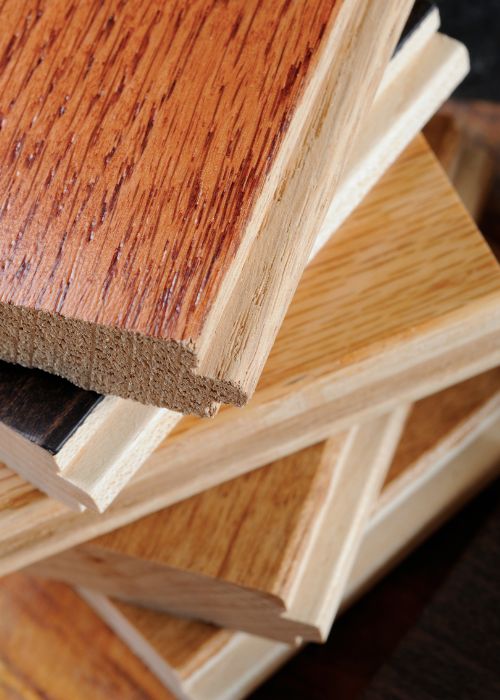Wood flooring is a product that increases the value of any home while offering long-lasting flooring solutions. From the longevity of wood to its ability to get refinished over time, though costlier than alternatives, it does offer many advantages. When selecting wood flooring, perhaps the most daunting yet exciting aspect of the selection process is understanding the wood grading. Manufacturers use a set of standard grading scales to determine the overall aesthetics, quality, final finish, and the variability in their flooring options.

The first option is whether a grade of a #1 or a #2 is applied. #1 is seen as a standard common flooring grade, whereas, #2 is considerably more rustic with a less refined finish. Many manufacturers either have their own assigned grades, use a national scale or a combination of both. For reclaimed antique flooring, usually, no grading is employed.
Understanding Lumber Grades
To help standardize and designate lumber grades, there are several national lumber grading organizations such as the:
*NELMA or Northeastern Lumber Manufacturers Association
*NHLA or National Hardwood Lumber Association
*SPIB or Southern Pine Inspection Bureau
Originally, grading standards were established as a method for describing the quality of the wood destined for cabinetry and furniture making. However, many companies have started employing these standards to describe their flooring materials. Popular terms may include “Select” and “#1 Common” among others. When homeowners are looking to purchase quality and aesthetically pleasing wood flooring, it is crucial to avoid purchasing anything based solely on lumber grades. Even though the lumber may bear all the markers of being a widely planed quality material, the aesthetics of it may leave a lot to be desired.
Standard Flooring Grades
Much like the national lumber grading scales, standard flooring grades allow manufacturers to adhere to strict national guidelines. Many employ the grades set forth by the NOFMA or National Oak Flooring Manufacturers Association as well as the MFMA or Maple Flooring Manufacturers Association. These grades, unlike those previously mentioned, are only appropriate when applied to flooring planks. From determining the aesthetics to the actual width of the planks, these guidelines dictate nearly all aspects of the flooring quality.
For example, MFMA standardized maple flooring lengths are to be no more than 9 to 96 inches long while their width cannot exceed 3 1/4 inches. The NOFMA, on the other hand, allows white oak planks to have an average length of 22 to 36 inches while the width must remain 3 1/4 inches.
After the length and width are determined, proprietary or common flooring grades are used. For example, a NOFMA white oak plank may meet company standards, but the variations in color and grain may become off putting for many homeowners. As such, many manufacturers employ proprietary flooring grades that address any problems with color variations, streaking, mineral deposits or knots.
No Grading
The only time no grading guidelines are employed is when antique or reclaimed lumber is sold as a flooring material. As such, reclaimed floor boards may bear mortise and tenon joints, voids, missing chunks or any number of antiquing factors. A reliable manufacturer will always provide consumers with samples of the boards they have available.
Classic Flooring is an Idaho Falls brand consumers have trusted for many years in the flooring industry. From offering quality hardwoods to aesthetically pleasing finishes, consumers can also reach out to get a free purchase estimate for brand new flooring at 208-525-3384 as soon as today!





About the author